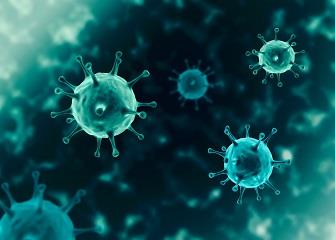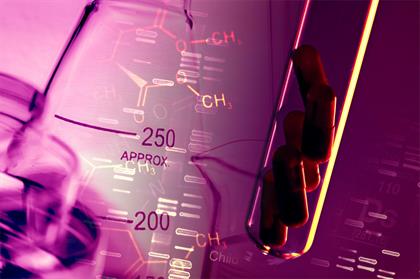
Classification
When the surface of the liposome is modified, the properties of the liposome can be changed to control the release of the internal drug, to achieve better targeting effect and drug efficacy. Current liposome release triggers include heat, light, pH, temperature, ultrasound, enzymes, magnetism and et al., which have been widely used in anti-tumor drug carrier research.
Conventional liposomes
As a drug delivery system, traditional liposomes can change the pharmacokinetic properties and tissue distribution of tumor drugs, enhance the target aggregation concentration of drugs, and enhance drug efficacy. However, traditional liposomes still have shortcomings such as unsatisfactory targeting distribution characteristics and poor stability, which limit their application in tumor chemotherapy.
pH-responsive liposomes
pH-sensitive liposomes are destroyed in the acidic environment of the tumor, thereby tending to release antineoplastic drugs to the tumor site. In pH-sensitive liposomes, an important factor that increases sensitivity is the disulfide cross-linking between the precursor molecules.
Temperature-responsive liposomes
Temperature-sensitive liposomes are lipid microspheres that can carry drugs and release drugs efficiently under high-temperature conditions, which is characterized by a main melting phase transition. At the phase transition temperature, the phospholipid in the liposome transitions from a colloidal state to a liquid crystal state, the encapsulated drug release rate increases, and a higher drug concentration is formed at the target site, which has a strong killing effect on the surrounding tumor cells. However, the drug release is slow when it deviates from the phase transition temperature.
Magnetic-stimuli responsive liposomes
Magnetic liposomes can be obtained by combining magnetic nanoparticles on the surface of liposomes. When an external magnetic field gradient from a magnetic source is applied, the magnetic nanoparticles on the surface are attracted to the magnetic force. Due to the action of the magnetic force, heat is generated, thus ensuring the release of the drug. The generated heat can also cause a phase transition of the lipid bilayer, resulting in a controlled, triggered release of the drug. They have important implications in the fields of imaging and targeted drug delivery, which also paves the way for the synergistic treatment of tumors with chemotherapy and hyperthermia.
Photosensitive responsive liposomes
Photosensitive liposomes require light-mediated activation to release drugs and use laser irradiation to activate liposomes to release drugs to kill tumor cells. It is often used in synergistic photodynamic therapy and chemotherapy and immune enhancement therapy for hypoxic tumors.
Ultrasound responsive liposomes
Due to their favorable physical properties, cost-effectiveness, and non-invasive nature of ultrasound, they are widely used for diagnostic or therapeutic purposes in cancer treatment. When the liposomes are subjected to ultrasound, the vibrations induced induce the nanoparticles to break up the lipid membrane, allowing the drug molecules to be easily released from the lipid membrane.
Targeted liposomes
Coating the surface of liposomes with hydrophilic polymers such as polyethylene glycol is an easy way to achieve targeted drug delivery, which tends to minimize subsequent uptake by the reticuloendothelial system and therefore Circulation time is longer for passive accumulation in cancer tissue.
In addition, various active substances can be coupled to the surface of liposomes to make liposomes have specific targeting properties. Among them, the specific interaction between receptors and ligands can be used to target ligand-labeled liposomes to organs, tissues or cells containing ligand-specific receptors, and the binding of receptors and ligands can promote lipid Internalized into cells. Monoclonal antibodies can also be coupled with liposomes to construct immunoliposomes (or affinity liposomes), and the liposomes can be targeted to specific cells and organs using antigen-antibody-specific binding reactions.
Advantages
Increase water solubility, protect blood soluble drugs and improve pharmacokinetic and pharmacological properties of drugs.
Tissue- or cell-specific drug delivery to limit drug accumulation in other non-target organs such as kidney, liver, spleen and improve efficacy.
Provides a combination of imaging and therapeutic agents to monitor therapeutic efficacy in real time.
Protect the loaded drug from degradation and prevent adverse exposure of the drug in the environment to slow the release rate of the drug.
Specific lipid species could reduce drug leakage.
Leave a Reply
Related Products
You Might Like Also

Lipids Used in COVID-19 mRNA Vaccines
The COVID-19 pandemic has killed millions of people. Vaccines certainly are the most outstanding ways to prevent major diseases and death, though they haven't eliminated infections. At present, the most effective vaccine is the mRNA vaccine developed by Pfizer-BioNTech and Moderna. Before that, mRNA technology stopped in the lab phase. Read More

Mechanism of Action of Paclitaxel
Paclitaxel is a natural anticancer drug with the molecular formula C47H51NO14. It has been widely used in the clinical treatment of breast cancer, ovarian cancer, and certain head and neck cancers, as well as lung cancer. Its novel and complex chemical structure, extensive and significant biological activity, unique mechanism of action, and scarce natural resources have gained immense favor among botanists, chemists, pharmacologists, and molecular biologists, making it a prominent anticancer star and research focus in the latter half of the 20th century. Read More

Fermented Raw Material for Cosmetic Skincare Product
The cosmetics and skincare industry is constantly evolving and a recent trend that has emerged is the use of fermented ingredients in skincare products. Fermentation is a microbial metabolic process that has been used for centuries in food and beverage production, and now it has been extended to the cosmetic industry. Read More

Hypoglycemic Functional Factors in Natural Products and Their Mechanisms of Action
Diabetes is a common clinical disease, and with the improvement of living standards, an increase in the number of obese people, and the intensification of aging populations, the incidence of diabetes is increasing year by year. Read More

Nanobodies Definition, Structure, Advantages and Applications
Nanobodies are the smallest functional single-domain antibodies known to be able to stably bind to antigens, and have unique structural and functional advantages. The molecular weight of nanobodies is only 12-15 kDa, which retains the antigen binding ability of traditional antibodies. However, nanobodies have higher solubility and stability, and have unique advantages in biological function and biochemical characteristics. Therefore, nanobodies have shown good control effects in disease diagnosis, cancer and infectious diseases. Read More

New Technology to Promote Drug Development-AI Technology
For a long time, the research and development of each new drug has faced the challenges of high cost and long cycle. In response to these challenges, major pharmaceutical companies have shifted from targeting common diseases to developing drugs for specific diseases. At the same time, these companies are constantly looking for new technologies for new drug development, such as high-throughput screening technology, DNA encoded chemical library, computer-aided drug discovery, and artificial intelligence. Read More










